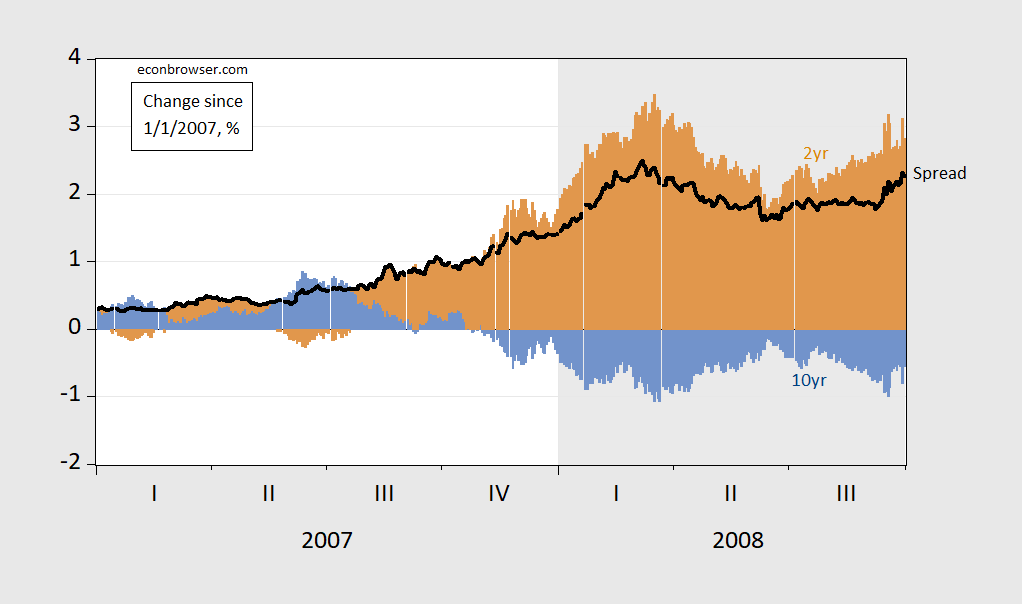Article today on whether it matters if dis-inversion occurs because short rates fall, or long rates rise.
Two years ago, the inversion of the yield curve—shorter-dated Treasurys yielding more than longer-dated bonds—was taken by investors as a surefire sign of recession. Now Wall Street worriers have a new concern: The yield curve is back to normal, a surefire sign of recession.
Here’s a decomposition of the 10yr-2yr term spread (2s10s) change since the beginning of June:
Figure 1: Change since June 1, 2024 in 10yr-2yr term spread (bold black), contribution to change from 10 year yield (blue bars), from 2 year yield (tan), all in percentage points. Source: Treasury via FRED, and author’s calculations.
Sure enough, slightly more than half of the steepening is associated with a decline in the short rate. Comparing to the the 2008 recession, we see a similar pattern.
Figure 2: Change since January 1, 2007 in 10yr-2yr term spread (bold black), contribution to change from 10 year yield (blue bars), from 2 year yield (tan), all in percentage points. Source: Treasury via FRED, and author’s calculations.
The overwhelming majority of the steepening was due to the drop in the 2 year yield (i.e., a “bear steepening”).
What about the 2001 recession?
Figure 3: Change since March 1, 2000, in 10yr-2yr term spread (bold black), contribution to change from 10 year yield (blue bars), from 2 year yield (tan), all in percentage points. Source: Treasury via FRED, and author’s calculations.
Here, we have might be called a “bear steepening”, where most of the term spread increase was due to the long rate rising, until just before the recession’s start, dated in April 2001 (since NBER puts the peak at March 2001).
So, none of this is to discount the possibility of an incipient recession — just that one can’t necessarily make a judgement based on whether it’s short rates falling, or long rates rising.
















